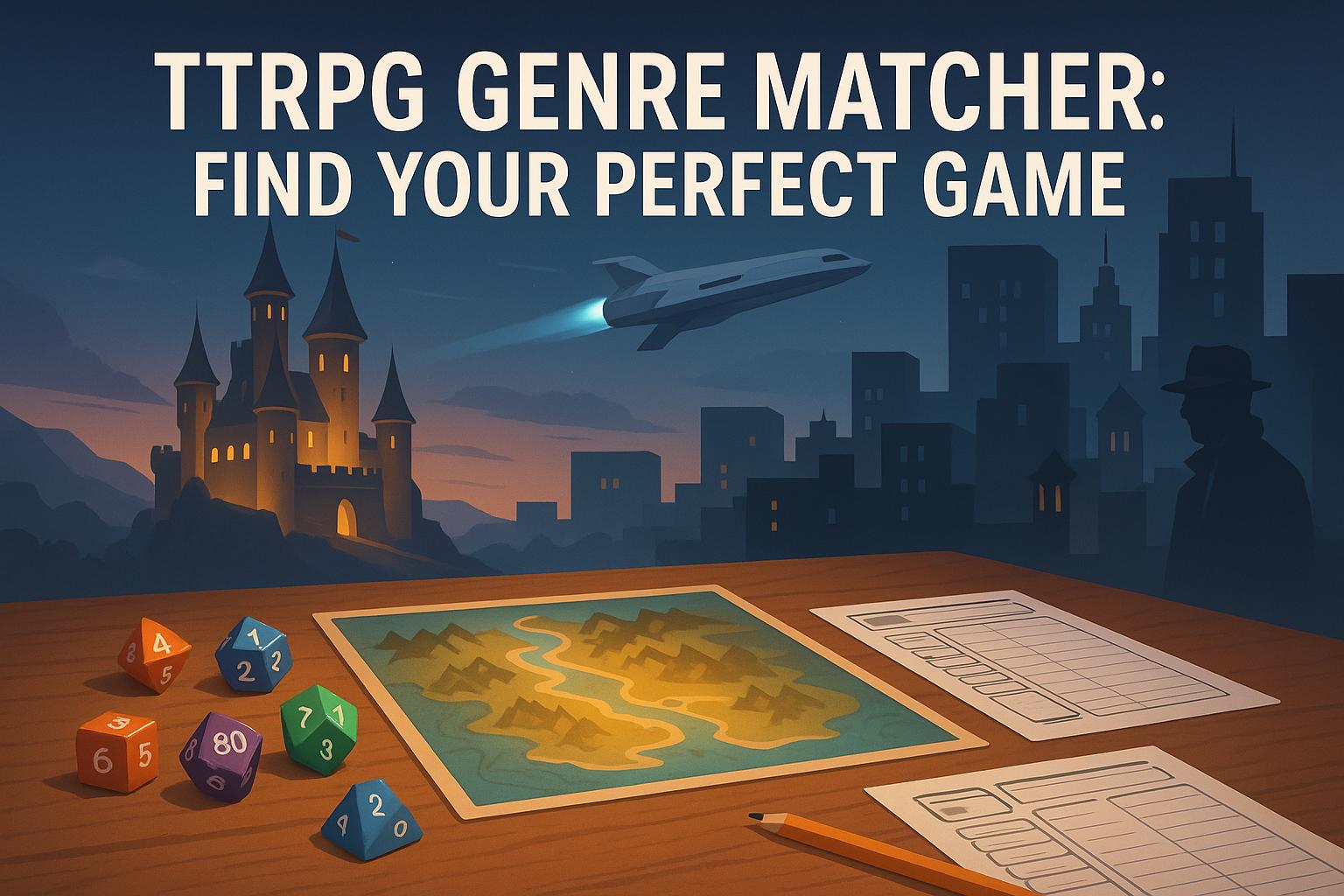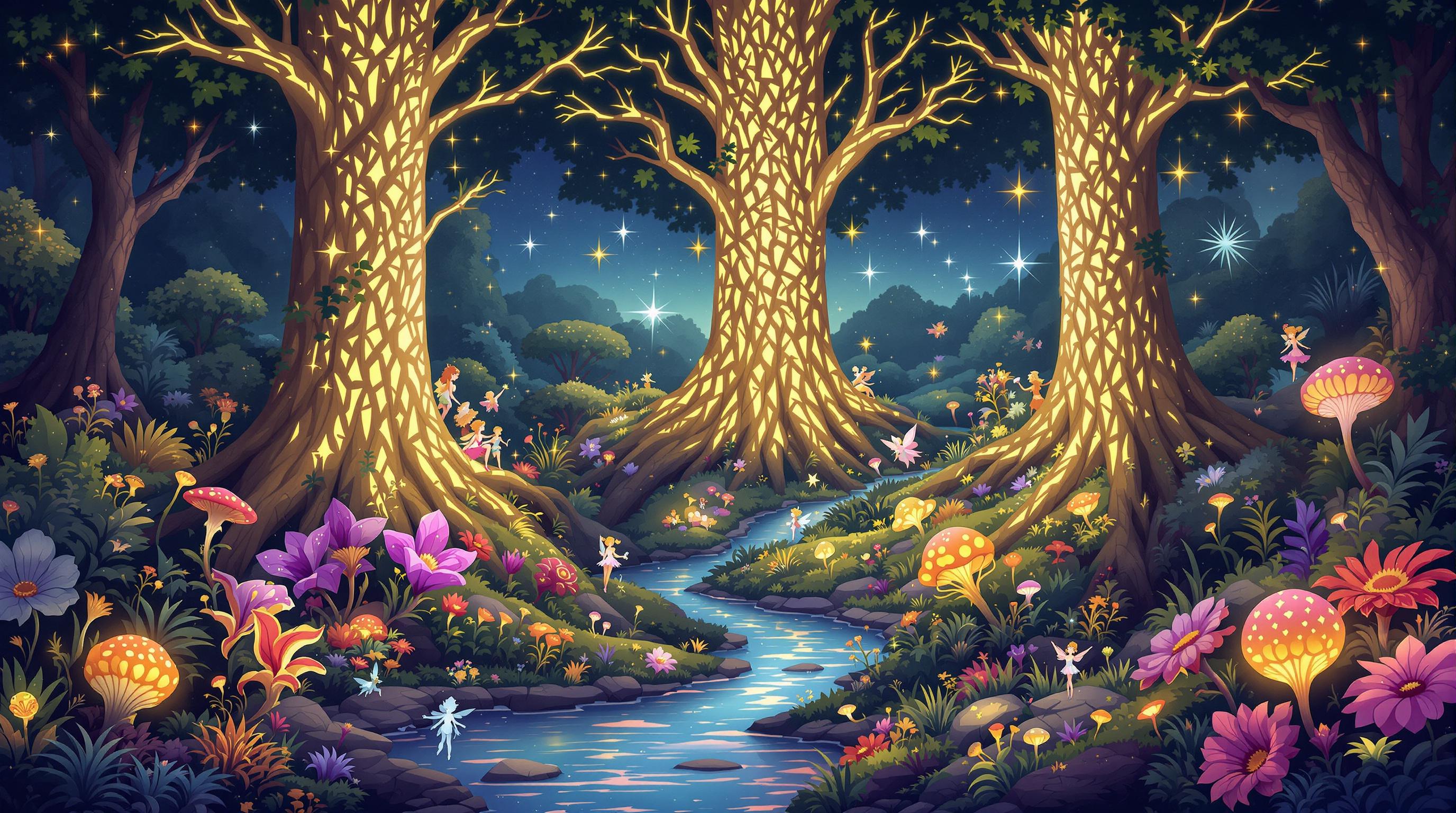Post-apocalyptic tabletop RPGs (TTRPGs) immerse players in survival-focused worlds where every decision carries weight. These games explore themes of scarcity, morality, and rebuilding society, offering diverse gameplay experiences. Here's a quick look at five standout titles:
- Mutant: Year Zero: Survival meets community-building with resource management and exploration in a mutant-filled wasteland.
- Apocalypse World: Focuses on relationships and storytelling in a brutal, character-driven setting.
- The Morrow Project: A science-based take on nuclear survival, emphasizing realism and reconstruction.
- Gamma World: Blends humor and chaos in a mutation-filled, quirky post-apocalypse.
- Degenesis: A dark, mature world with alien threats and moral complexity.
Each game caters to different playstyles, from tactical realism to narrative-driven chaos. Whether you enjoy managing resources, building relationships, or exploring mutated landscapes, these TTRPGs deliver immersive survival adventures.
Quick Comparison
| Game | Focus | Playstyle | Difficulty |
|---|---|---|---|
| Mutant: Year Zero | Resource management, exploration | Balanced survival and strategy | Moderate |
| Apocalypse World | Relationships, storytelling | Narrative-driven | Easy |
| The Morrow Project | Realism, reconstruction | Tactical, detail-heavy | Hard |
| Gamma World | Humor, mutations | Lighthearted, chaotic | Easy |
| Degenesis | Alien threats, moral choices | Dark, complex storytelling | Hard |
Choose based on your group's preferences - narrative depth, tactical challenges, or chaotic fun. Dive into the wasteland and shape your survival story!
🎲☢️D&D's Post-Apocalyptic Cousin: GAMMA WORLD! 🐉🔫
1. Mutant: Year Zero
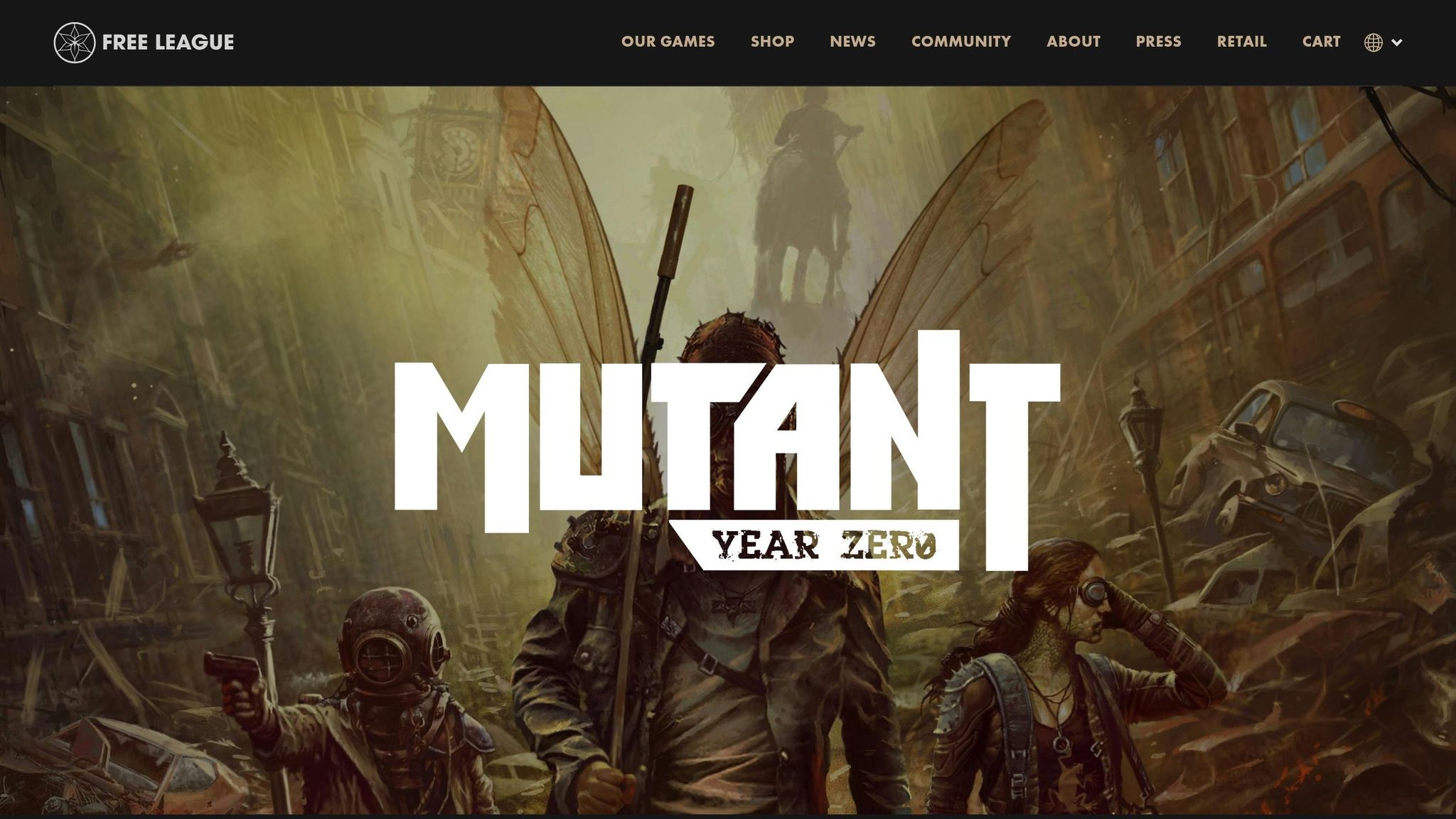
Mutant: Year Zero is a post-apocalyptic tabletop RPG (TTRPG) that dives deep into the harsh realities of survival. Created by Free League Publishing, the game blends resource management with exploration, forcing players to make tough, high-stakes decisions.
Setting and Atmosphere
The game unfolds in the Ark, a fragile settlement where mutated survivors struggle to endure. Life in the Ark is precarious, with survival hanging by a thread. Beyond its borders lies the Zone - a treacherous wasteland filled with mutant creatures, fanatical cults, and other deadly hazards. The atmosphere is bleak and tense, drawing comparisons to The Walking Dead TV series. The 272-page core book, adorned with striking full-color artwork, paints a vivid picture of this desolate world. This grim setting enhances the survival mechanics, making every choice feel impactful.
Survival Systems
Survival in Mutant: Year Zero is a constant battle against scarcity. Players must venture into the Zone to scavenge resources, but the game's encumbrance system forces them to carefully weigh what they can carry. Combat is equally unforgiving, as ammunition is scarce, requiring players to think strategically about every shot. Adding another layer of complexity are the characters' mutant abilities. These powers can be lifesaving, but overusing them takes a toll on the body.
Mechanically, the game employs a d6-based system where rolling a six signifies success. Players can "push" their rolls to improve outcomes, but this comes with risks - gear might break, or mutations could spiral out of control. Beyond individual survival, managing the Ark is a key part of gameplay. Players must balance four critical metrics - Food, Culture, Tech, and Warfare - to ensure the community's survival. These mechanics seamlessly tie into the narrative, creating a world where every decision feels weighty and interconnected.
Storytelling Methods
The game thrives on collaborative storytelling, with players making decisions that shape both their characters and the Ark itself. Each session begins with a vote on projects to improve the Ark, such as fortifications or agricultural advancements. Gameplay is divided into two phases: the PC (Player Character) phase, focused on exploration and personal adventures, and the Ark phase, which deals with community management and politics. These dual phases create a dynamic interplay between individual survival and the broader goal of rebuilding civilization. As players improve the Ark, new challenges emerge in the Zone, providing a constant push-and-pull between progress and peril.
Replay Value
What sets Mutant: Year Zero apart is how player choices shape the game's trajectory. Depending on how resources are allocated and decisions are made, the Ark can evolve in drastically different ways, altering the course of the campaign. However, opinions on replayability are mixed. Some players find the evolving Ark and emergent challenges engaging, while others feel that certain encounters can grow repetitive over multiple playthroughs. Additionally, the book's layout has been criticized for making it difficult to quickly locate specific rules.
Game Masters should also brace for a high mortality rate. The system is intentionally unforgiving, and many characters may not survive to see the campaign's end. This relentless difficulty underscores the game's themes of survival and sacrifice, where every decision carries weight and consequences.
2. Apocalypse World
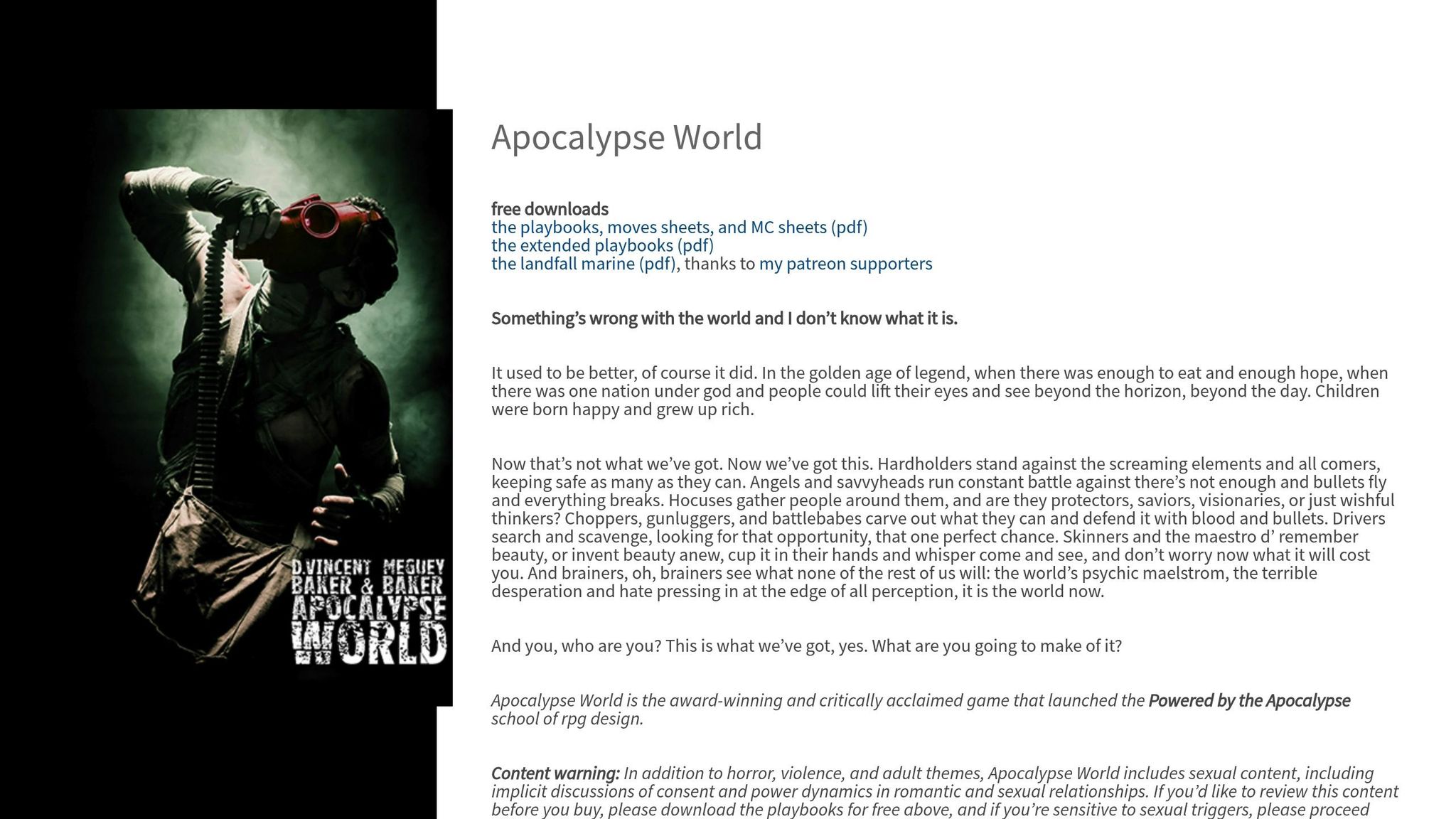
Apocalypse World changed the landscape of post-apocalyptic gaming by prioritizing storytelling and relationships over traditional mechanics. Created by Vincent Baker, this acclaimed game earned the 2010 Indie RPG Award and the 2011 Golden Geek RPG of the Year. Instead of focusing on superhuman heroes, it tells the story of ordinary people struggling to survive in a brutal, shattered world.
Setting and Atmosphere
Set fifty years after the apocalypse, survival depends on trust, ingenuity, and the connections players build. The game begins with players collaboratively shaping the desolate world during character creation, crafting a setting unique to their group. As one fan described it:
"Apocalypse World is at its core, a game about societies and small group personal relationships, with an eye to the drama in them." – LeVentNoir
The game thrives on interpersonal tension, scarcity, and constantly shifting alliances. It’s not just about external threats - players must navigate a world where allies can quickly turn into enemies. Designed for 3–5 players and a Master of Ceremonies (MC), the atmosphere is thick with drama and unpredictability.
Survival Systems
Apocalypse World introduces the Powered by the Apocalypse (PbtA) system, which focuses on storytelling and player agency over rigid rules. Players roll 2d6 and add a relevant stat to resolve actions. Rolls of 10+ succeed, 7–9 succeed with complications, while 6 or less allows the MC to introduce consequences.
Characters are defined by five stats - Cool, Hard, Hot, Sharp, and Weird - ranging from –3 to +3. Instead of traditional hit points, the game uses countdown clocks to track harm, making every injury feel impactful.
"In Apocalypse World, it's much more important that you choose options that are interesting than that you choose ones that are optimal." – JaskoGomad
Dice rolls only occur when there’s real risk, keeping the focus on the unfolding narrative.
Storytelling Methods
The game takes a fresh approach to storytelling. The MC doesn’t rely on pre-written plots but instead builds the narrative around the players’ choices. Relationships are central, with History (Hx) stats tracking how characters feel about each other, evolving as the story progresses. Each character archetype has unique moves that trigger in specific situations, adding depth and variety.
Rather than focusing on epic, world-changing events, the game hones in on the daily grind of survival. The MC adapts to player decisions, ensuring the story feels organic and player-driven.
"All these rules do is mediate the conversation. They kick in when someone says some particular things, and they impose constraints on what everyone should say after. Makes sense, right?" – Vincent Baker
Replay Value
Apocalypse World offers endless replayability, thanks to its emergent storytelling and dynamic character relationships. The game’s open-ended nature ensures that threats evolve independently of player actions, keeping the tension high. The MC uses a system called Fronts, which focuses on NPC motivations rather than fixed actions, making every session feel fresh.
Character growth is tied to using highlighted stats, developing relationships through Hx, and triggering special moves. The inclusion of 'sex moves' and built-in player-versus-player conflict adds layers of complexity, reflecting the volatile nature of life in the wasteland. With its ever-changing dynamics, Apocalypse World captures the chaos and unpredictability of post-apocalyptic survival, where every decision matters and nothing stays the same for long.
3. The Morrow Project
The Morrow Project takes a grounded, science-based approach to survival, focusing on the harsh realities of nuclear warfare and the immense challenge of rebuilding civilization. Unlike many post-apocalyptic TTRPGs, this game emphasizes the complexities of reconstruction, setting it apart in the genre.
Setting and Atmosphere
The game’s story revolves around a group of American industrialists who foresaw the possibility of nuclear war and launched a contingency plan called "The Morrow Project." Volunteers were cryonically frozen in hidden bunkers, equipped with supplies and tools, ready to emerge and rebuild society after the fallout. The narrative unfolds in a grimly realistic world where a nuclear war in 1989 - triggered by an accidental NORAD training program - wiped out 95% of the global population within six months.
What makes this setting unique is its perspective: players take on the roles of individuals awakening from cryosleep, with memories of the pre-war world but limited preparation for the new, hostile environment. The game doesn’t shy away from detail, even providing diagrams of MIRV warhead detonations and lists of primary bomb targets across the US. This scientific precision adds weight to every decision, immersing players in the catastrophic aftermath of nuclear war.
Survival Systems
The Morrow Project excels in delivering gritty, realistic survival mechanics. It covers everything from radiation exposure and disease to the physical toll of combat. The encumbrance system, for instance, penalizes characters by reducing their Dexterity if they carry too much weight. Resource management is a constant priority, with teams relying on carefully planned load-outs and scavenging to survive. Players can choose from specialized roles - Recon, MARS, Science, and Specialty - each contributing uniquely to the reconstruction effort.
Radiation plays a significant role, with detailed rules on exposure, shielding, and even the risks of mutations. Combat is equally precise, featuring mechanics that track wounds and weapon stats with scientific accuracy.
"The price of this realism is the great amount of dice-rolling necessary to determine the location and effect of wounds." – Bill Fawcett
These systems create a gameplay experience that’s as much about calculated risks as it is about survival.
Storytelling Methods
The game’s narrative leans heavily on realism, setting it apart from more fantastical post-apocalyptic worlds. While mutant creatures occasionally appear, The Morrow Project focuses on threats like roving gangs and authoritarian regimes. Game Masters are provided with an abundance of background material, covering everything from the effects of nuclear weapons to the spread of radiation and biological warfare.
The structured mission-based framework gives players a clear purpose: to restore civilization while grappling with limited resources and a fractured command structure. Along the way, characters encounter a variety of factions, including self-proclaimed law enforcers, religious zealots, and descendants of pre-war groups. Game Masters are encouraged to customize scenarios, adjusting casualty rates and radiation levels to keep campaigns unpredictable and engaging.
Replay Value
The Morrow Project offers extensive replayability, thanks to its detailed world-building and the variety of team specializations. Each region presents unique challenges shaped by its pre-war importance and post-war conditions. While the game’s depth enhances its realism, the complexity of its rules may be daunting for casual players. That said, the wealth of equipment lists and vehicle stats provides ample material for scavenging and tactical planning.
"As a game, Morrow Project has too many ambiguous rules for casual players, though hard-core science-fiction fans might enjoy it. But as a sourcebook of nuclear holocaust, it's without peer, unreservedly recommended to anyone with an interest in the subject." – Rick Swan
With its motto, "Ordinary People, Extraordinary Mission", The Morrow Project delivers a distinctive mix of survival and reconstruction drama, offering a deeply immersive experience that keeps players coming back for more.
4. Gamma World
Gamma World stands out as a post-apocalyptic tabletop RPG (TTRPG) that mixes science fantasy with survival in a way that feels distinct from the grittier, more realistic takes on the genre.
Setting and Atmosphere
Set in the mid-25th century, the game takes place after a catastrophic event that reshaped the planet. Instead of focusing on bleak nuclear realism, Gamma World injects its apocalypse with a quirky sense of humor. In earlier editions, the downfall of civilization stemmed from escalating material excess and violent social unrest, culminating in a devastating war between AD 2309 and 2322. The 2010 edition offers a more outlandish explanation: the activation of the Large Hadron Collider caused a reality-warping event dubbed "the Big Mistake".
The world is teeming with mutations, creating a bizarre and unpredictable landscape. Humans, animals, and even plants have been transformed, leading to scenarios where players might encounter sentient vegetation, motorcycle-riding badgers, or mutant rabbits. These oddities are set against a backdrop of ancient ruins, malfunctioning robots, and mysterious super-science artifacts. Adding to the chaos are Cryptic Alliances - shadowy groups with conflicting ideologies that weave layers of political tension into the game. These elements combine to create a world where survival is as much about navigating strange alliances as it is about avoiding danger.
Survival Systems
Survival in Gamma World leans heavily on creativity rather than strict realism. The mutation system is central to the gameplay, granting characters abilities that can completely shift the course of their adventures. This encourages players to think strategically, not just in combat but also in how they approach challenges. While resources like food, water, and ammunition are scarce, the possibility of uncovering powerful artifacts offers moments of hope and excitement. The random nature of character creation adds another layer of unpredictability, pushing players to constantly adapt their strategies.
Storytelling Methods
A hallmark of Gamma World is its use of random mutation tables, which generate unique character traits and flaws. This randomness ensures that no two characters - or campaigns - are ever quite the same. The chaotic setting, filled with mutated creatures, ancient technology, and rival factions, provides endless story possibilities. Common plotlines include protecting fragile communities, recovering lost relics, and surviving encounters that range from the mundane to the utterly bizarre. Cryptic Alliances play a significant role in shaping the narrative, often driving conflict and intrigue.
"Gamma World offers one of the more bizarre and hostile environments to role-play in." - Dana Lombardy
The game’s compatibility with Dungeons & Dragons rules allows for creative crossovers, blending genres and expanding the scope of storytelling. With its mix of technological and narrative elements, Gamma World offers a sandbox for Game Masters to craft memorable adventures.
Replay Value
One of the biggest draws of Gamma World is its replayability. Its fragmented societies, strange ecologies, and unpredictable mutations ensure that every campaign feels fresh. The randomized mechanics keep players on their toes, while the Cryptic Alliances offer multiple directions for storytelling. The game’s science fantasy tone lets Game Masters experiment with everything from medieval-style tech to futuristic super-science, tailoring the experience to their group’s preferences.
"There seems to be an innate fascination with the end of the world, be it from a global thermal nuclear war, zombie outbreak, alien invasion, or super-bug and Gamma World finds a way to bring the fantastic to this type of setting." - Scott Taylor
Exploration and discovery are at the heart of the game. The remnants of the final war - altered coastlines, decimated cities, and radioactive wastelands - create a world that feels dangerous and alive. Interestingly, experience points and leveling up aren’t the primary focus. Instead, the game keeps players engaged through its emphasis on survival, exploration, and the ever-present chaos of mutations.
sbb-itb-b8b00a5
5. Degenesis
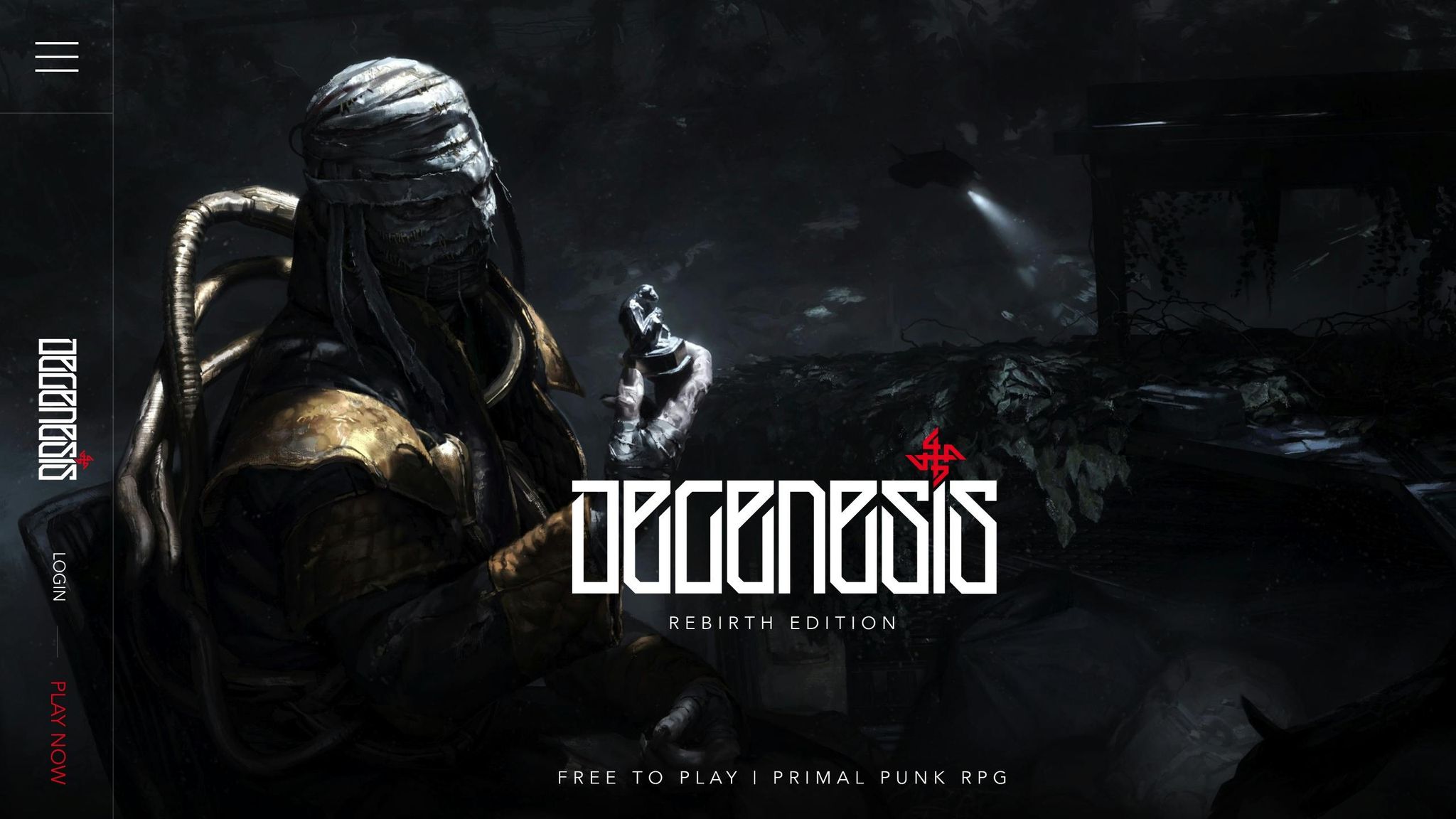
Degenesis brings to life a "Primal Punk" post-apocalyptic world, set 500 years after the catastrophic Eschaton meteor fall. This event introduced alien spores that mutated life on Earth, creating a harsh and morally gray landscape where survival is a constant battle. This tabletop RPG (TTRPG) stands out with its gritty atmosphere, genetic horrors, and deeply layered storytelling.
Setting and Atmosphere
The game's universe spans Europe and Northern Africa, reshaped by the alien biology known as the Primer, which emerged after the Eschaton meteor impacts. Vast spore fields now dominate the land, infecting humans and transforming them into Homo Degenesis - an eerie, mutated evolution that is both a promise and a threat. The world of Degenesis thrives on ambiguity, avoiding clear-cut heroes and villains in favor of a survivalist narrative.
Seven distinct Cultures have risen from the ruins of the old world, each with its own traditions and values. These societies coexist uneasily alongside various Cults, each pursuing its own agenda. The game’s core rulebooks, spread across 704 pages, dive deeply into this universe with stunning illustrations, detailed maps, and evocative text that invite players to explore its depths. The technology in Degenesis reflects a mix of pre-Eschaton relics, salvaged machinery, and improvised tools, adding to the post-apocalyptic feel.
"Degenesis: Rebirth is a visually astounding, sumptuous, two-volume, 704-page passion project - a richly-layered, horrific, intrigue-riddled, techno-mystical post-apocalypse Earth that feels like it was discovered rather than created."
- Unpossible Journeys
Survival Systems
At the heart of Degenesis is the KatharSys system, built around six core attributes: Body, Agility, Charisma, Intellect, Psyche, and Instinct, each tied to specific skills. Players roll a pool of d6 dice, where rolls of 4–6 count as successes, and rolling a 6 unlocks enhanced outcomes. Dice pools are capped at 12 to maintain balance and tension.
Combat is designed to be unforgiving. Characters can sustain flesh and trauma wounds, which directly impact their ability to act, making every encounter a high-stakes affair. This encourages players to think carefully before engaging in conflict. Resource management is equally critical, with rules for encumbrance and travel demanding thoughtful planning. Players must also contend with Spore Infestation, a constant reminder of the alien threat that looms over humanity.
Storytelling Methods
Character creation in Degenesis blends three key elements: Culture, Concept, and Cult. This system not only shapes a character’s identity but also ties them into the game’s factions, where reputation and standing are influenced by player decisions. Every choice matters, adding weight to the narrative.
The game’s expansive metaplot is rich enough to fuel years of campaigns, combining primal survival with transhumanist themes. The alien Primer serves as both a narrative driver and a persistent antagonist, introducing new challenges and horrors as the story unfolds. Despite its complexity, the KatharSys system ensures smooth gameplay, allowing for engaging and fluid storytelling.
Replay Value
Degenesis offers immense replay potential, thanks to its morally complex world and emphasis on meaningful choices. The sprawling 500-year backstory, combined with seven unique Cultures, provides endless opportunities for varied campaigns. The ever-changing threat of the alien Primer keeps players on their toes, ensuring no two campaigns feel the same.
The game’s production quality is another standout feature. From the premium materials to the breathtaking illustrations, the rulebooks create an immersive experience that draws players deeper into the world. Although active development for Degenesis ended on October 22, 2021, the digital rulebooks remain available for free, inviting new players to explore its dark and compelling take on post-apocalyptic survival.
Game Comparison: Pros and Cons
Picking the right post-apocalyptic tabletop RPG (TTRPG) boils down to your group's preferences - whether you lean toward detailed mechanics, immersive storytelling, or a mix of both. Each game in this genre offers its own spin on survival and narrative engagement.
| Game | Pros | Cons |
|---|---|---|
| Mutant: Year Zero | • Award-winning design with creative mechanics • Balances resource management and ark development • Encourages exploration and community-building • Combines traditional RPG elements with strong narrative |
• Relies heavily on rolling sixes for success |
| Apocalypse World | • Narrative-first approach with strong player agency • "Moves" system keeps gameplay dynamic and story-driven • Builds deep character relationships and social dynamics • Easily adaptable to different post-apocalyptic settings |
• May not appeal to players who prefer more detailed rules |
| The Morrow Project | • Realistic military simulation with detailed combat and resource systems • Focuses on rebuilding America after an apocalypse • Appeals to fans of tactical planning and realism |
• Rules can feel overwhelming for beginners |
| Gamma World | • Wild humor and bizarre mutations make for unforgettable sessions • Multiple editions provide flexibility in mechanics • Perfect for groups looking for lighthearted, experimental play |
• Heavy emphasis on mutants |
| Degenesis | • Focuses on survival and mature storytelling in a richly detailed setting | - |
Each of these games brings something unique to the table. Mutant: Year Zero uses dice pools where success depends on rolling sixes, blending exploration with ark development. Apocalypse World drives gameplay through narrative "moves", encouraging character growth and dynamic storytelling. The Morrow Project offers a simulation-heavy experience, ideal for players who enjoy strategic military gameplay. Gamma World delivers chaotic fun with its quirky mutations and evolving mechanics across editions. Lastly, Degenesis stands out with its mature themes and survival-focused storytelling, powered by a d6 dice pool system.
If your group values gritty realism, both The Morrow Project and Degenesis deliver intense survival experiences. For a balance of exploration and community-building, Mutant: Year Zero is a solid pick. Apocalypse World thrives on character-driven narratives and adapts well to darker tones, while Gamma World offers a lighter, more experimental approach for groups that enjoy humor and creativity.
Storytelling styles also vary widely. Apocalypse World and Degenesis shine with character-focused narratives, while The Morrow Project leans into simulationist gameplay. Gamma World encourages out-of-the-box problem-solving, and Mutant: Year Zero blends personal stories with group progress.
Experience level matters, too. Apocalypse World and Gamma World are more accessible for newcomers, while Degenesis and The Morrow Project reward players who are ready to dive into complex systems. Mutant: Year Zero strikes a balance, offering depth for seasoned players while remaining approachable for those new to TTRPGs.
With this breakdown, you can better match your group's preferences to the game that suits their survival style best.
Conclusion
The world of post-apocalyptic TTRPGs offers something for every kind of player, blending tactical challenges with gripping storytelling. Let’s quickly revisit what makes each game stand out in defining survival after the fall of civilization.
Degenesis delivers an intense experience for seasoned players, combining stunning production value with thought-provoking themes. It’s a game that pushes boundaries and challenges groups to dive deep into its intricate world. On the other hand, Mutant: Year Zero strikes a balance between exploration and community building. As Tomas Härenstam, the lead developer, puts it:
"a game about what happens after the end of the world. It's about finding your history and building your future. And cool mutants!"
Apocalypse World emphasizes dynamic storytelling through its innovative moves system, delving into the complexities of societal collapse and personal relationships. For those seeking a lighter, more humorous take on the apocalypse, Gamma World offers creative problem-solving with a quirky twist.
If you're new to TTRPGs, Apocalypse World or Gamma World might be easier to jump into. For more experienced players, Degenesis offers a layered, immersive experience, while Mutant: Year Zero provides a well-rounded mix of narrative and strategy. Each game reimagines the post-apocalyptic genre, crafting unique journeys of survival and rebuilding.
For even more wasteland adventures, check out the TTRPG Games Directory and find the perfect setting for your next post-apocalyptic quest!
FAQs
What’s the difference between narrative-driven and tactical survival gameplay in post-apocalyptic TTRPGs?
Narrative-driven gameplay puts storytelling, character arcs, and emotional engagement at the forefront. Players are often given the power to influence the story through their decisions, creating a more personal and immersive experience. These types of games usually loosen gameplay rules, encouraging creativity and highlighting the characters' individual struggles - especially in settings like a post-apocalyptic world.
In contrast, tactical survival gameplay leans heavily on strategy, resource management, and navigating environmental hurdles. These games are built on structured systems, often featuring detailed rules for combat and survival. Success requires critical thinking and careful planning to tackle the challenges that come your way.
What makes the 'Powered by the Apocalypse' system so effective for storytelling in games like Apocalypse World?
Powered by the Apocalypse: A Storytelling System
The Powered by the Apocalypse system is all about crafting rich, player-driven stories. It thrives on collaboration between players and the Game Master, making sure every choice and action leaves a mark on the story. Instead of rigid pre-planned events, the narrative evolves organically, shaped by the decisions made around the table.
At its core are simple but flexible mechanics, like Moves, which ensure the story flows smoothly while keeping an element of surprise. These mechanics put the spotlight on characters - their choices, relationships, and struggles - creating deeply engaging worlds. It’s especially well-suited for gritty, post-apocalyptic adventures where survival and tough moral decisions keep the drama alive.
What should a gaming group think about when picking the best post-apocalyptic TTRPG for their style of play?
When picking a post-apocalyptic TTRPG, a few key factors can make or break the experience. Start by thinking about the game mechanics and the tone - do you want something gritty and intense, or maybe a more lighthearted take on survival? Consider how challenging the survival aspects are and how richly detailed the setting is, as these elements will shape the kind of story your group can tell.
Another thing to keep in mind is the system's complexity. Some games keep it simple, focusing on storytelling and improvisation, while others lean heavily into detailed mechanics for a more tactical vibe. Matching these elements to your group's preferences will help create an adventure that's not just fun but also deeply engaging.

